Accessibility Ramps and Railings for Schools
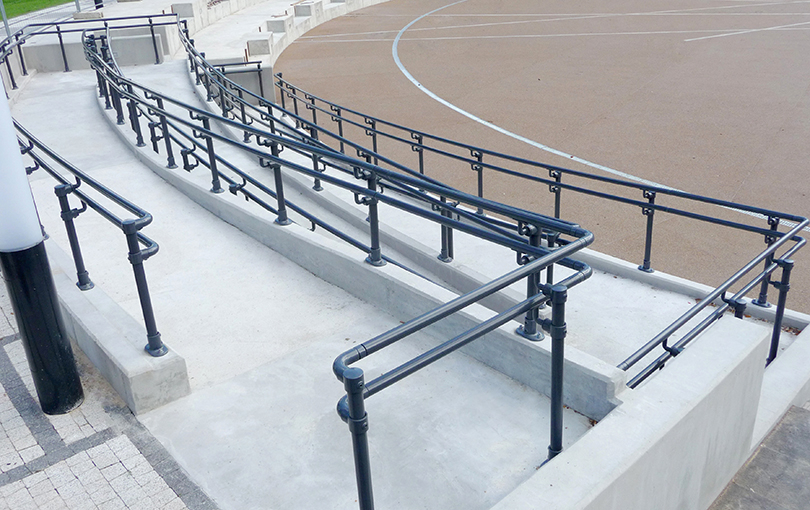
Inclusivity and having equal access to education are basic rights for all students, no matter their background or physical abilities. A way schools can ensure that they provide a safe and inclusive environment is through wheelchair accessible ramps and railings throughout the school.
Accessibility ramps and railings offer easier movement for students with disabilities or limited mobility, as well as offering a range of benefits for the entire school.
Now you may be asking, why should I care or why does it matter? Well, I used to think the same thing too, until I was the one in need when I was in school and wished there were better systems in place.
In this article, we will discuss the needs and advantages of ramps and railings in schools, along with the requirements for accessibility ramps and railings outlined by the Americans with Disabilities Act (ADA).
School Accessibility Needs and Benefits
Back in high school, one may say I was leading a normal life, but there was one thing that I knew was looming. I had to have two knee surgeries to fix a problem that I was born with, and never once did it cross my mind, “How am I going to get around school?”.
I was going to be on crutches for several months and then in a large brace for a total of a year, but my school had an elevator for the second floor, so I thought, “oh I’ll be fine.”
Boy was I wrong, there were so many different instances throughout that school year that I wish we had the proper ramps or railings in place.
Whether that was better ramps for different entrances around the school, railings for waiting in line for lunch, or simple steps that were taken to ensure safety like salting the entrances in the winter and making sure floors were cleaned so that crutches don’t slip.
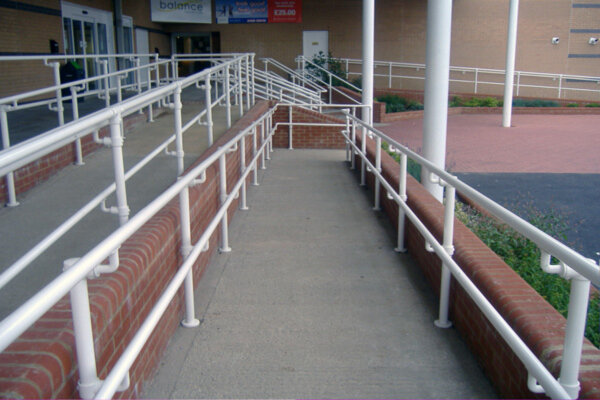
Now this isn’t some big “woe is me” type article, keep in mind, I only had to deal with this for a year, I can’t imagine the other students I knew who were in wheelchairs or who had other mobility issues that have been dealing with it for much longer, if not their whole lives.
Schools may already have accessibility ramps or other systems and people in place to assist a student as they walk the halls or school grounds.
At my school they let you leave class 5 minutes early (this was the best as a student who didn’t want to be in class anyways) and have a friend in the class help carry your bag and books to your next class. Oh, and as I mentioned there was an elevator, so you got a pass to take that which was pretty awesome.
However, not every school has these systems in place, so giving the student the freedom to be independent will help them feel encouraged and safe on their own.
School Accessibility Solutions
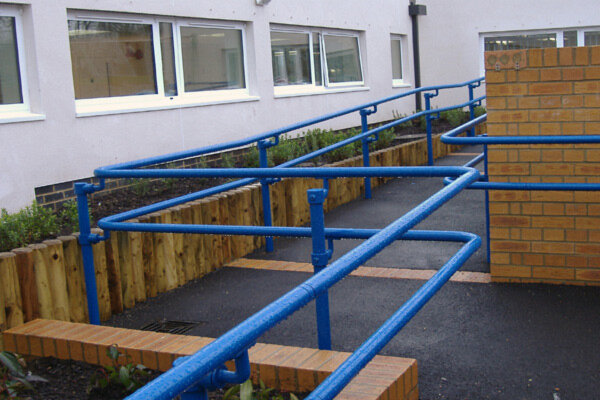
Having accessibility ramps throughout the school will eliminate any physical barriers that students with mobility challenges may have when navigating the school independently.
All these systems in place bring about a greater sense of safety and security for a student when going about their day. Providing a safe and comfortable place for the day will make it easier for a student to focus on the main reason they’re at school which is their education.
We can now see that the benefits of having accessibility ramps and railings throughout the school are more than just a safe means of mobility.
So, what are the best means to this? Well, these are types of solutions I wish were in place in my school.
Wheelchair Accessibility Ramps
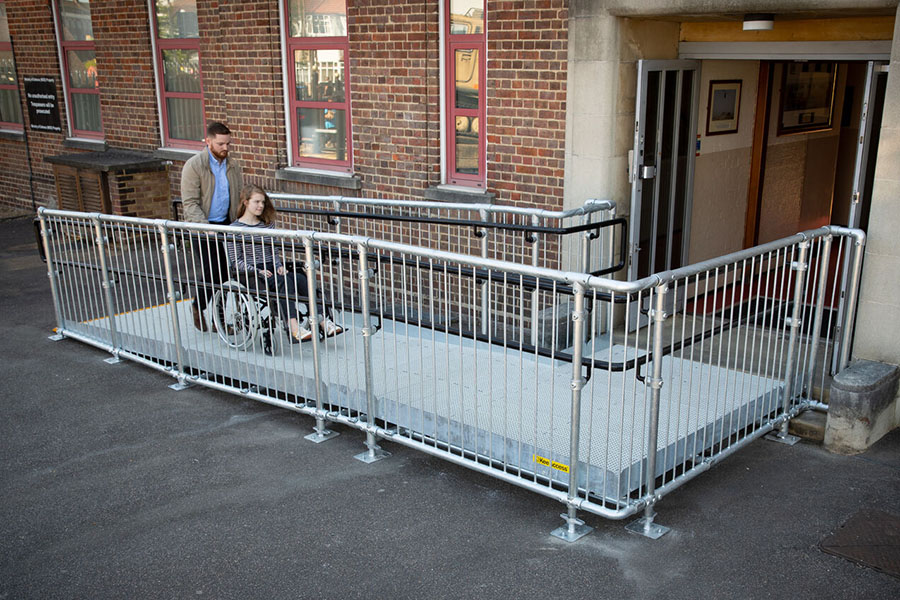
Wheelchair ramps aren’t just meant for wheelchairs, hence why I’ve been using the term accessibility ramp throughout most of this article, but I don’t want to there to be any confusion when it comes to the terms.
Accessibility ramps can be utilized by everyone. These types of ramps can be used by those on crutches, those who use a cane, or those who just have difficulty with stairs.
Once I was done with crutches, I was in a large knee brace for many months, and while I was able to walk, it still made walking and stairs a struggle. Having more access to ramps around the school would have made it easier even if I didn’t necessarily “require” them.
I feel this may be the case for a lot of students who may struggle with stairs but don’t feel like they’re “allowed” to use ramps if they don’t have some noticeable limitation.
Wheelchair Ramp Requirements
When your school is looking to build or install new ramps railings throughout the school, there are a few guidelines you’ll want to make sure they meet. It’s important to note that the ADA applies to both businesses and schools. Some districts may have their own guidelines when it comes to regulations to provide equal accommodations, but most follow or just directly use the ADA guidelines.
For accessibility ramps, here are some key requirements outlined by the ADA to ensure they’re safe and up to code:
- Slope: Ramps should have a maximum slope of 1:12 (for every inch of rise, there should be 12 inches of ramp length) to ensure easy use individuals.
- Handrails: Railings should be installed on both sides of the ramp, extending the ramp and provide continuous support. The height of the handrails should be between 34 and 38 inches, they should 36 inches in width across the ramp, and you need a bottom rail that is no more than 4 inches from the base of the ramp (if there isn’t a physical barrier already in place).
- Landings: Ramps should have a level landing at the top and bottom to provide a safe transition. These landings should be at least 60 inches long and as should be as wide as the ramp itself.
Accessibility Railings
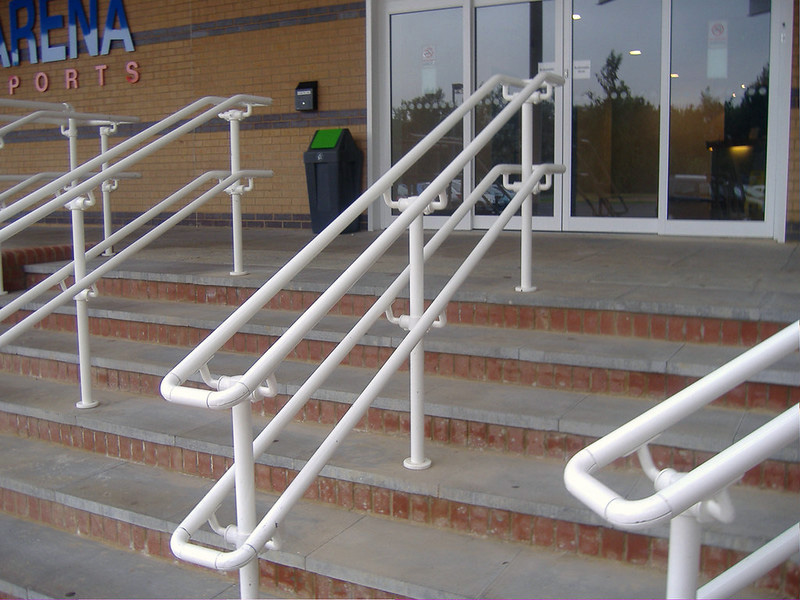
These railings aren’t just for those in a wheelchair or crutches but are needed for those with all kinds of limited mobility.
Accessibility handrails are most used for stairs or ramps, but they can also be used in different areas throughout the school. As I mentioned, even when waiting in line for lunch, it would have been nice to just have a simple handrail like this when it became tiring to stand for too long.
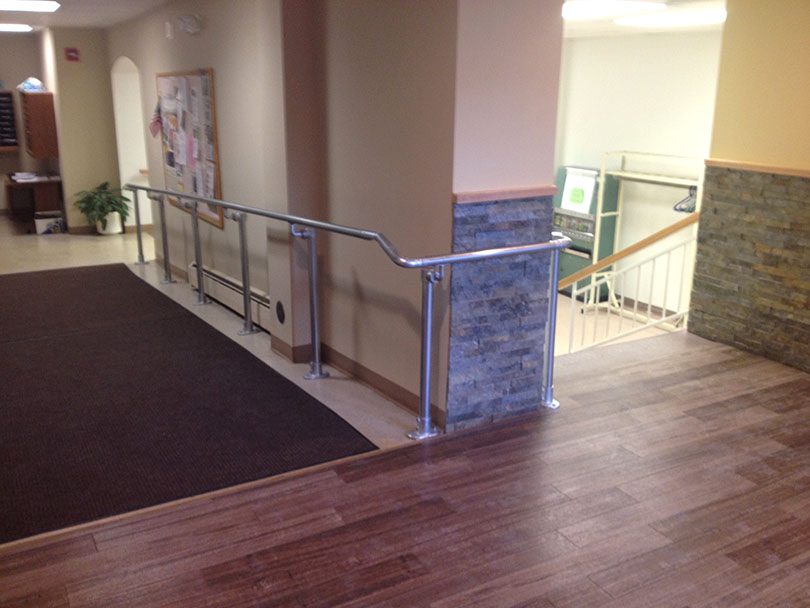
ADA Railing Requirements
When it comes to railing, like wheelchair ramps, there are a few guidelines to make not of when installing new accessibility handrails.
- Height: Handrails need to be between 34 and 38 inches in height and should have a 1-1/2-inch gap from any adjacent surface.
- Smooth: Handrails need to be continuous and smooth and end in either a wall, landing surface, or continue onto an adjacent handrail.
- Length: Handrails at the top of the stairs need to level out and continue for an additional 12 inches, and handrails at the bottom of the stairs need to continue for the length of the depth of a stair tread.
In Review
Accessibility ramps and railings are much more than just a piece of metal. They are handrails that are helping students feel a sense of safety, inclusivity, and independence when navigating schools.
My hope here is that you see that it’s not just a legal requirement for schools to have the proper ramps and railings throughout their school, but it is a huge importance to the students and helps foster a positive and safe culture within the school.
If you are looking to incorporate wheelchair accessible ramps and/or new handrails in your school, then please contact our team who would love to assist you with your plans!
